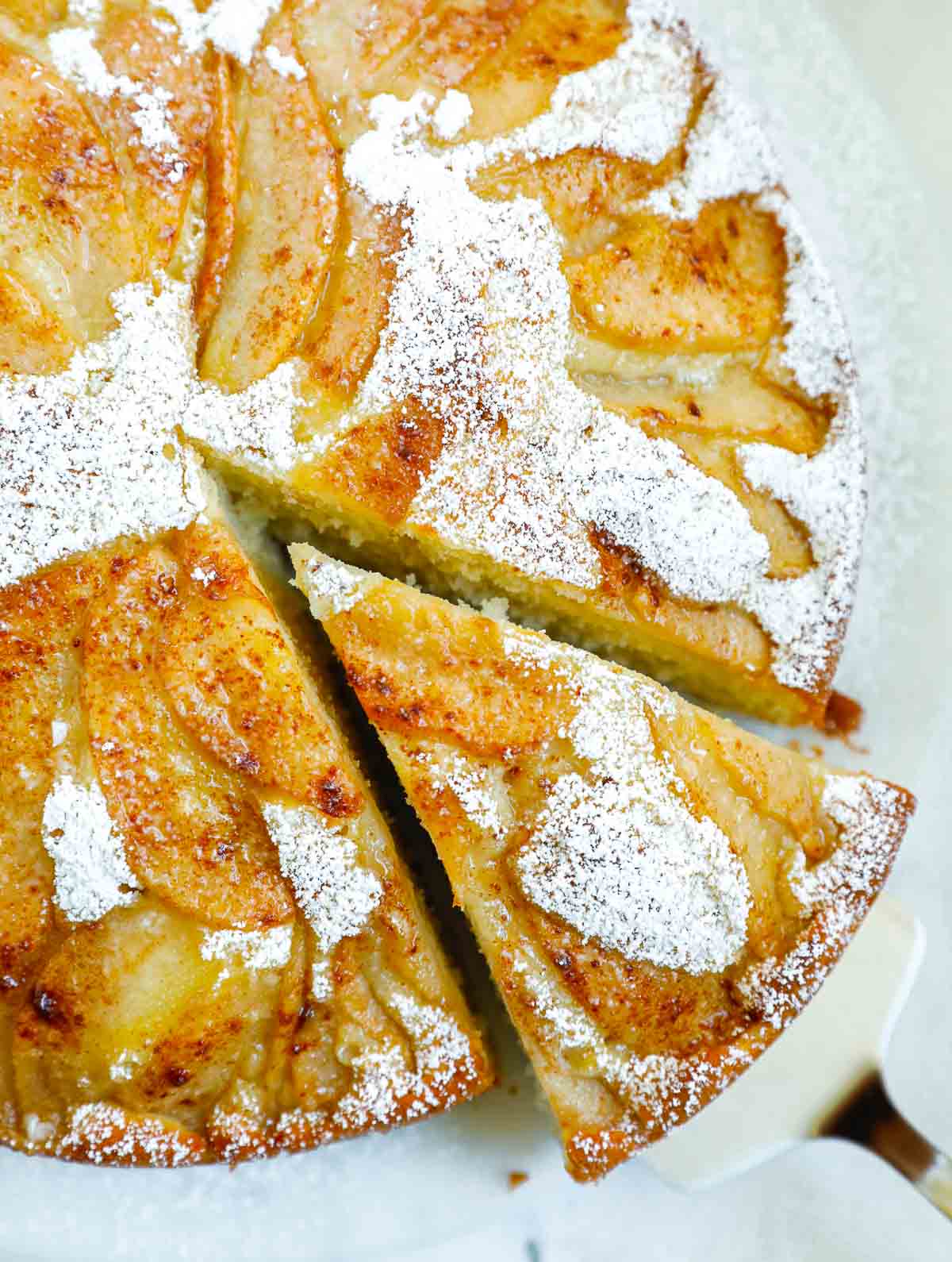This Super Moist Pear Cake, made with ripe, juicy pears, is perfectly sweet and melts in your mouth. It’s the ideal dessert for any occasion, whether enjoyed as a tea-time snack, a sweet treat after a meal, or even as a breakfast delight. This pear cake is sure to become a beloved favorite in your home.
WHY YOU’LL LOVE THIS EASY PEAR CAKE RECIPE
- Moist and Tender: As the pears bake, they release natural juices, making the cake wonderfully moist and flavorful.
- Simple Ingredients: This recipe uses only pantry staples and ripe pears – no need for anything fancy.
- Versatile: Enjoy this cake warm or at room temperature, and pair it with toppings like whipped cream or a scoop of ice cream for an extra treat.
- Seasonally Adaptable: While perfect for fall with pears, this cake can be made year-round by swapping in apples or peaches.
INGREDIENTS
2¼ cups cake or all-purpose flour, sifted
1½ cups fine granulated white sugar
½ cup unsalted butter, softened
⅓ cup canola or vegetable oil
3 tsp baking powder
1-2 tbsp vanilla extract, to taste
4 large eggs
½ cup whole milk
3 ripe pears, peeled and thinly sliced
⅛ tsp salt (just a pinch)
1 tsp lemon zest (optional)
2 tbsp confectioners’ sugar, for dusting after baking
Toppings (before baking)
¼ cup brown sugar (or less, as desired)
¾ tsp cinnamon

INSTRUCTIONS
- Preheat the oven to 350°F (175°C).
- Peel and slice the pears.
- In a mixing bowl, beat together the sugar and butter until well combined, about 1 minute.
- Add the vanilla extract, lemon zest (if using), and eggs. Mix on high speed for 1-2 minutes until the mixture is pale and fluffy.
- Add the sifted flour, baking powder, and salt. Mix for about 1 minute. Gradually add the milk and oil while mixing on low speed. Continue mixing for another minute, until the batter is thick (not runny).
- Line the bottom of a round springform pan (about 10 x 3 inches) with parchment paper and grease the sides. Pour the batter into the pan.
- Layer the sliced pears evenly over the batter, then sprinkle with cinnamon and brown sugar.
- Bake in the preheated oven for 55 minutes to 1 hour. After 40 minutes, cover the cake with foil to prevent over-browning while it finishes baking. Avoid overbaking, as this can dry out the cake. Test for doneness by inserting a wooden skewer into the center – it should come out clean or with just a few moist crumbs.
- Depending on your oven and the thickness of your pan, baking time may vary. Keep an eye on it!
- Once done, remove the cake from the oven and cover it with a kitchen towel to cool. Allow it to cool for up to 1 hour.
- Just before serving, dust the cake with confectioners’ sugar.
NOTES
- Choose ripe pears: The juicier the pears, the more moisture your cake will have. Bartlett or Anjou pears work best.
- Don’t overmix: When adding wet and dry ingredients, mix just until combined to avoid a dense cake.
- Grease the pan well: Use parchment paper or grease the pan thoroughly to ensure easy removal.
- Test for doneness: Insert a thin skewer into the center of the cake – if it comes out clean or with a few moist crumbs, the cake is ready.
- Cool completely: Let the cake cool in the pan for 10-15 minutes before transferring it to a wire rack to avoid crumbling.
- Butter: Always use softened, room-temperature butter. Make sure it’s real butter (no substitutes).
- Sugar dusting: If you’re not serving the cake right away, avoid dusting it with sugar immediately as the pear moisture will absorb it. Dust the cake right before serving.
- Cooking time: Oven types and pan thickness can affect cooking time. Use a skewer to check doneness, and adjust baking time if necessary. I use an electric oven on normal bake mode with a fan, which may differ from conventional ovens or other types, impacting the bake time.







